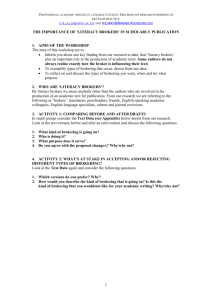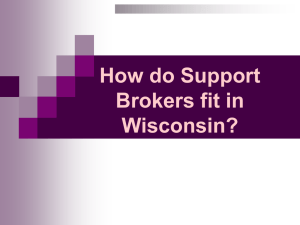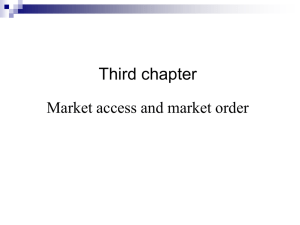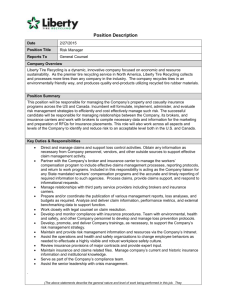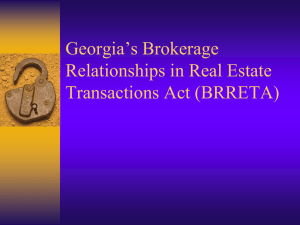doc - NTAC-AAPI
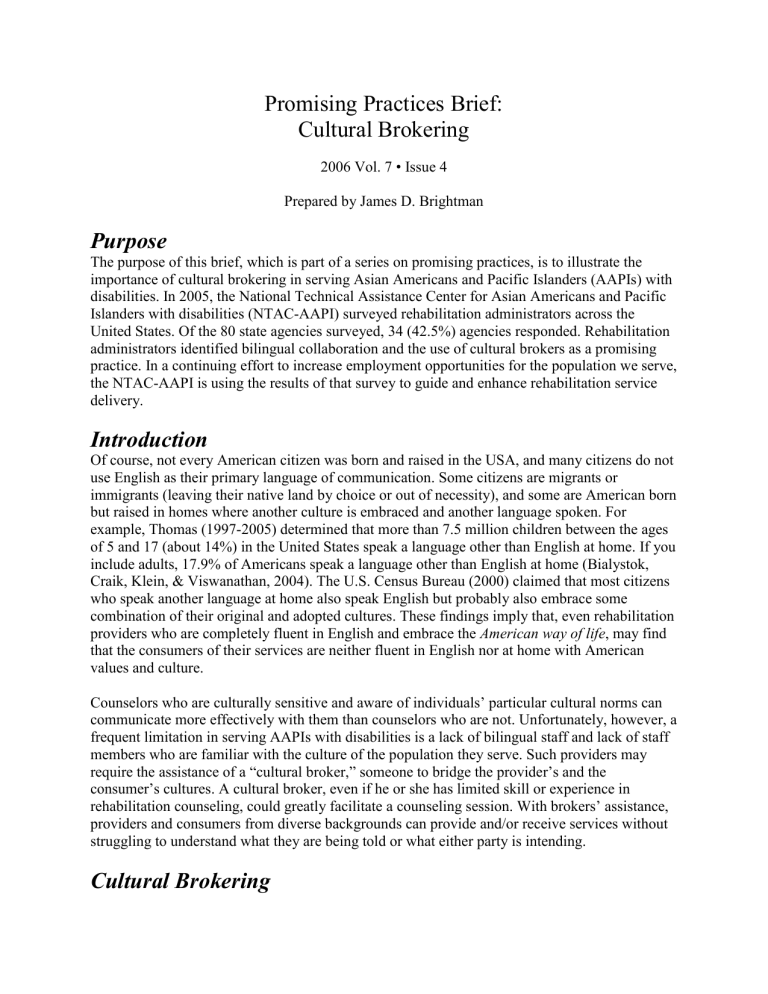
Promising Practices Brief:
Cultural Brokering
2006 Vol. 7 • Issue 4
Prepared by James D. Brightman
Purpose
The purpose of this brief, which is part of a series on promising practices, is to illustrate the importance of cultural brokering in serving Asian Americans and Pacific Islanders (AAPIs) with disabilities. In 2005, the National Technical Assistance Center for Asian Americans and Pacific
Islanders with disabilities (NTAC-AAPI) surveyed rehabilitation administrators across the
United States. Of the 80 state agencies surveyed, 34 (42.5%) agencies responded. Rehabilitation administrators identified bilingual collaboration and the use of cultural brokers as a promising practice. In a continuing effort to increase employment opportunities for the population we serve, the NTAC-AAPI is using the results of that survey to guide and enhance rehabilitation service delivery.
Introduction
Of course, not every American citizen was born and raised in the USA, and many citizens do not use English as their primary language of communication. Some citizens are migrants or immigrants (leaving their native land by choice or out of necessity), and some are American born but raised in homes where another culture is embraced and another language spoken. For example, Thomas (1997-2005) determined that more than 7.5 million children between the ages of 5 and 17 (about 14%) in the United States speak a language other than English at home. If you include adults, 17.9% of Americans speak a language other than English at home (Bialystok,
Craik, Klein, & Viswanathan, 2004). The U.S. Census Bureau (2000) claimed that most citizens who speak another language at home also speak English but probably also embrace some combination of their original and adopted cultures. These findings imply that, even rehabilitation providers who are completely fluent in English and embrace the American way of life , may find that the consumers of their services are neither fluent in English nor at home with American values and culture.
Counselors who are culturally sensitive and aware of individuals’ particular cultural norms can communicate more effectively with them than counselors who are not. Unfortunately, however, a frequent limitation in serving AAPIs with disabilities is a lack of bilingual staff and lack of staff members who are familiar with the culture of the population they serve. Such providers may require the assistance of a “cultural broker,” someone to bridge the provider’s and the consumer’s cultures. A cultural broker, even if he or she has limited skill or experience in rehabilitation counseling, could greatly facilitate a counseling session. With brokers’ assistance, providers and consumers from diverse backgrounds can provide and/or receive services without struggling to understand what they are being told or what either party is intending.
Cultural Brokering
2
The National Center for Cultural Competence (2004) found that the words “cultural broker” have more than one definition. In one sense, cultural brokering denotes the act of bridging, linking, or mediating between groups or persons of differing cultural backgrounds for the purpose of reducing conflict or producing change. A cultural broker acts as a go-between, one who advocates on behalf of another individual or group. In systems of health care, cultural brokering is an intervention through which the professional increasingly uses skills and knowledge of culture and science to negotiate with the client and the health-care system to provide an effective, beneficial plan for health care.
Moreover, the term “cultural broker” can also denote individuals ranging from immigrant children (who negotiate two or more cultures daily) to leaders in organizations (who serve as catalysts for change). The range and complexity of roles in health-care settings are equally varied.
Roles of Cultural Brokers
The National Center for Cultural Competence (2004) identifies four specific roles of cultural brokers in a health-care setting. The four roles are described below.
1. Cultural broker as a liaison
Cultural brokers are knowledgeable in two realms: (1) the health values, beliefs, and practices within their cultural group or community, and (2) the health-care system that they have learned to navigate effectively for themselves and their families. These cultural brokers serve as communicators and liaisons between the patients/consumers and the providers in the health-care agency. They can play a critical and beneficial role—on a personal level, in the community in which they live—and on a professional level in their agencies or practices. These personnel effectively bridge two worlds.
2. Cultural broker as a cultural guide
Cultural brokers may serve as guides for health-care settings that are in the process of incorporating culturally and linguistically competent principles, values, and practices. They not only understand the strengths and needs of the community but also are cognizant of the structures and functions of the health-care setting. These cultural brokers can assist in developing educational materials that will help patients/consumers learn more about the health-care setting and its functions. They also can provide guidance on implementing initiatives in workforce diversity. Some organizations that are well connected to the communities they serve use a community member as a cultural broker because of the member’s insight and experiences. A critical requisite for the cultural broker is having the respect and trust of the community. Using a community member as a cultural broker is acknowledgment that this person’s expertise resides within the community. This approach also allows the health-care setting to provide support for community development.
3. Cultural broker as a mediator
Cultural brokers can help ease the historical and inherent distrust that many racially, ethnically, and culturally diverse communities have toward health-care organizations. Two elements are essential to the delivery of effective services: (1) the ability to establish and maintain trust, and
(2) the capacity to devote sufficient time to build a relationship of cooperation between the
3 provider and the patient/consumer. Cultural brokers employ these skills and promote increased use of health-care services within their communities, bridging a chasm of distrust that many cultural communities have toward researchers. For instance, cancer researchers have had to find ways to ease the concerns of the African American community about participating in clinical trials. For many African Americans, the Tuskegee study, conducted from 1932 to 1972, remains a painful reminder of medical research gone wrong. In that study, poor black men were not fully informed about their participation in medical research on syphilis. They also were not given treatment for their disease, despite the eventual availability of drugs for treatment of syphilis.
Cultural brokers can be instrumental in re-establishing trust and re-enforcing the importance of participating in research, particularly related to the elimination of racial and ethnic disparities in health.
4. Cultural broker as a catalyst for change
In many ways, cultural brokers are agents for change because they can initiate the transformation of a health-care setting by creating an inclusive and collaborative environment for providers and patients/consumers alike. They model and mentor behavioral change, which can break down bias, prejudice, and other institutional barriers that exist in health-care settings. They work toward changing intergroup and interpersonal relationships so that the organization can build capacity from within to adapt to the changing needs of the communities they serve.
Requirements of Cultural Brokers
Whatever their position or roles, cultural brokers must have the capacity to accomplish the following tasks:
assess and understand their own cultural identities and value systems;
recognize the values that guide and mold attitudes and behaviors;
understand a community’s traditional health beliefs, values, and practices and changes that occur through acculturation;
understand and practice the tenets of effective cross-cultural communication, including the cultural nuances of both verbal and nonverbal communication; and
advocate for the patient, to ensure the delivery of effective health services.
Who can be a cultural broker? The National Center for Cultural Competence (NCCC, 2004) claims that cultural brokers can be outreach and lay health workers, peer mentors, community members (family members, patients), administrative leaders, nurses, physicians, physical therapists, health care providers, social workers, interpreters, program managers, health educators, board members, or program-support personnel. Where can cultural brokers be found?
The NCCC claims cultural brokers can be found in community health centers, community-based organizations, government offices, churches, mosque, kivas, plazas, temples, and other places of worship, schools and universities, hospitals, faith-based organizations, and migrant communities in general.
Use Professional Interpreters Whenever Possible
Clearly, a very important part of cultural brokering is interpreting. The U.S. Department of
Health and Human Services’ Health Resources and Services Administration (2005) claims that, although it may seem most convenient to ask family members to interpret, family members
4 should be used only as a last resort. The Civil Rights Act of 1964 and the August 30, 2000 Office for Civil Rights (OCR) Policy Guidance require providers to use professional interpreters.
Professional interpreters have been trained to provide accurate, sensitive, two-way communication and to uncover areas of uncertainty or discomfort.
Often, family members are too emotionally involved to tell the patient’s story fully and objectively, or they may lack the technical knowledge to convey the provider’s message accurately. Patients also may be embarrassed to discuss personal matters with family or friends.
Providers should avoid placing the responsibility for interpreting with family members or friends unless the patient specifically declines your offer of a trained interpreter or if a professional interpreter is unavailable. Providers who do not ask if their patient wants a trained interpreter may place themselves in violation of the law.
When a professional interpreter is unavailable, family members should be asked to translate the patient’s exact words—and to add their own explanation as a separate piece of information. To ensure that the family member is correctly conveying your words to the patient, it may be useful to ask the family member to tell you in English exactly what he or she is going to say to the patient (Health Resources and Services Administration, 2005).
Recommendations from the Field
Peter Hu (2006), an Asian American rehabilitation provider with the Bellevue Division of
Vocational Rehabilitation in the State of Washington, agrees with this practice. He says, “I think often times the Vocational Rehabilitation system and the disability system is really confusing with its different programs and services.” Hu recommends utilizing cultural brokers, individuals who are able to provide the ethnic client with information and referral to the different programs of social service. Cultural brokers, he believes, may also bring a sense of comfort to the client and family, thus increasing their willingness to access the different programs of social service available.
What if you are not bilingual, cannot locate cultural brokers, and family members are not available? Do whatever you can to help. For instance, Jan Bailey (2006) of Minnesota’s State
Services for the Blind helps new immigrants by providing them with a list of important words,
“rehabilitation words,” as she calls them, for those individuals to learn. The list contains direction and food words, common products, and other common words to help individuals who may not be proficient in English to perform their activities of daily living and to function more easily in their communities.
Summary
Bilingual professionals, in all fields, have the advantage of being able to serve a larger population. However, bilingual/bicultural providers of rehabilitation services are not common.
Collaboration with cultural brokers by rehabilitation providers who are not completely fluent in two languages or two cultures can minimize misunderstandings and alleviate some of the helpseeking apprehension common among persons with limited English proficiency, even those who were born and raised in the USA. By utilizing cultural brokers who can communicate in an individual’s native language and also in English, the subtleties, innuendoes, and inflexions of language are more likely to be communicated and understood by both the sender and receiver.
Contacts
Listed below are examples of contact information for cultural brokers highlighted in the NCCC (2004) guide.
Native American Women’s Health
Education Resource Center
Charon Asetoyer, Executive Director
PO Box 572
Westside Prevention Project Low Rider
Bike Club
Sandra M. Bonilla, Westside Prevention
Project Manager
Lakes Andes, SD 57356
P HONE : (605) 487-7072
F
AX
: (605) 487-7964
EMAIL : charon@charles-mix.com
Unity Health Care, Inc.
Federal City Shelter-Community for
Creative Non-Violence
Sister Eileen Reid, R.N., Health Center
Manager
425 2nd Street, NW
Washington, DC 20001
P
HONE
: (202) 737-5098
F
AX
: (202) 738-3254
EMAIL : EReid@UnityHealthCare.org
Partners in Healing
Marilyn Mochel, R.N., C.D.E., Program
Manager
Healthy House within a MATCH Coalition
1729 Canal Street
Merced, CA 95340
P
HONE
: (209) 724-0102
F AX : (209) 724-0153
EMAIL : mmochel@mercednet.com
Dove Creek Community Health Clinic
Dianne Smith, Executive Director
495 West 4th Street
Dove Creek, CO 81324
P HONE : (970) 677-2291
F
AX
: (970) 677-2540
Casa de San Bernardino, Inc.
735 North D Street
San Bernardino, CA 92401
P HONE : (909) 381-5507/F AX : (909) 888-5938
Project Early Awareness
Rosemary Williams, M.Ed., CTR,
Cancer Program Manager
Howard University Cancer Ctr., Rm. 324
Howard University Hospital
2041 Georgia Avenue, NW
Washington, DC 20060
P
HONE
: (202) 865-4613
F
AX
: (202) 865-4659
EMAIL : Rwilliams@huhosp.org
La Clinica Latina
Cregg Ashcraft, M.D., Co-Director
The Ohio State University Medical
Center/Thomas E. Rardin Health Center
2231 North High Street
Columbus, OH 43201
P
HONE
: (614) 268-1488
F AX : (614) 293-2715
EMAIL : ashcraft-2@medctr.osu.edu
Southern Ohio Health Services Network
Kim Patton, Executive Director
400 Techne Center Drive, Suite 402
Milford, OH 45150-2746
P HONE : (513) 576-7700
E-
: Kpatton@sohsn.com
Campesinos sin Fronteras
Emma Torres, Project Director
611 West Main Street
PO Box 423
Somerton, AZ 85350-0423
P HONE : (928) 317-4554/F AX : (928) 627-1899
EMAIL : ecarni1@aol.com
The Assemblies of Petworth
Ray Michael Bridgewater,
Executive Director
1201 Allison Street, NW
Washington, DC 20011
P HONE : (202) 585-7709
F AX : (202) 722-4561
Please also visit this website http://erc.msh.org/aapi/index.html
to learn more about AAPI demographics, epidemiology, and medical traditions as well as suggestions for reducing health disparities and developing cultural competence.
Author Note:
5
James David Brightman, a Certified Rehabilitation Counselor, earned a Master’s degree in
Rehabilitation Counseling, a Specialist’s degree in Adult Education, and has completed coursework for a PhD in Rehabilitation Counseling.
References
Bailey, J. (13 April 2006). Re: Promising practices. [E-mail communication].
Rochester, MN: State Services for the Blind.
Bialystok, E., Craik, F. I. M., Klein, R., & Viswanathan, M. (2004). Bilingualism, aging, and cognitive control: Evidence from the Simon Task. Psychology and Aging,
19 (2), 290-303 .
Health Resources and Services Administration (2005). Reducing health disparities in
Asian American & Pacific Island populations: Communicating across cultures.
Washington, DC: U.S. Department of Health and Human Services. Available online at: http://erc.msh.org/aapi/index.html
Hu, P. (13 March 2006). Re: Promising practices. [E-mail communication]. Bellevue,
WA: Bellevue Department of Vocational Rehabilitation.
National Center for Cultural Competence (2004). Bridging the cultural divide in health care settings: The essential role of cultural broker programs . Washington, DC:
National Center for Cultural Competence, Georgetown University Center for Child and
Human Development. Accessed 17 July 2006 at: http://www11.georgetown.edu/research/gucchd/nccc/documents/Cultural_Broker_Guide_
English.pdf
Thomas, M. (1997-2005). The advantages of being bilingual . Rockville, MD: American
Speech-Language-Hearing Association. Accessed 3 July 2006 at: http://www.asha.org/about/news/tipsheets/bilingual.htm
U. S. Census Bureau (2000). Language other than English spoken at home. Census of
Population and Housing, Demographic Profile.
Accessed 7 July 2006 at: http://factfinder.census.gov
6
